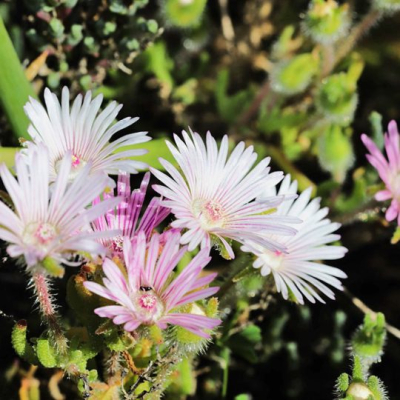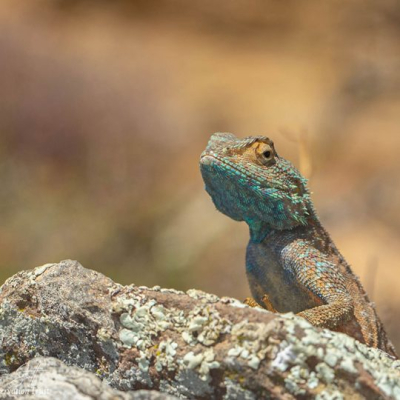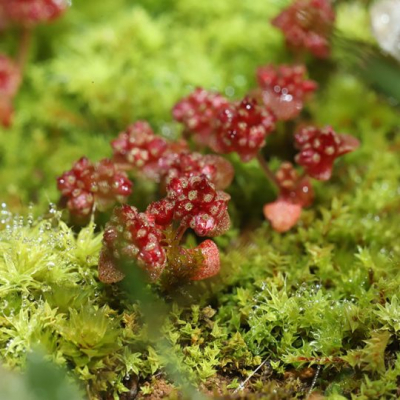Central Rûens Shale Renosterveld may be the most poorly protected lowland renosterveld in the Overberg (with the least amount left too). But this week, the Overberg Renosterveld Conservation Trust (ORCT), working with farmers here, took a big stride in protecting this diverse habitat – by signing a new conservation easement.
This easement brings 160 hectares of Critically Endangered renosterveld under protection in perpetuity. The farmers who signed are from Klipdale Boerdery, which has four commercial farmers in this joint venture. These include two farmers (Adriaan Steyn and Neethling Dippenaar) who are already part of the Conservation Easement Programme for renosterveld in the Breede River area.

For Klipdale Boerdery Manager, Franco le Roux, it was important to join the programme because of the incredible veld that is now protected. “It’s really a wonderful piece of renosterveld,” he says. “By signing this easement, we’re unlocking value from something that might not be seen as valuable for farmers traditionally. It might not have much agricultural value, but we’re giving it value this way.”

Above: Delosperma cf. neethlingiae
Have you heard of the Sout Rivier?
These 160 hectares are not only important to the landowners and the ORCT, but should also be for any nature lover – especially those who frequent CapeNature’s De Hoop Nature Reserve.
Odette Curtis-Scott, Director of the ORCT explains, “Everyone knows about the De Hoop Vlei – and sees and enjoys the incredible birdlife protected here. And yet people don’t know much about the river that feeds this proclaimed Ramsar site – the Sout Rivier. This new easement includes a stretch of this river, which we’re working to bring under protection piece by piece. So this new easement is another piece of the puzzle.”

The significance of the river was also seen by the farmers who signed the easement – hence their decision to call it the Soutrivier Renosterveld Reserve.
Franco says, “The river means a lot to us. Our families enjoy the river – and I take my kids to braai and camp along the banks of the river.”

Managing across farm borders – for nature
The Soutrivier easement is the 22nd easement since the Conservation Easement Programme launched in 2017 – covering 7 110 hectares in all, and 4 600 hectares of Critically Endangered veld. More significantly, it’s the fourth easement in the poorly protected Central Rûens Shale Renosterveld, with the ORCT also lending support to two stewardship sites in this area.
Odette says, “It effectively doubles the size of the Kykoedie Conservation Easement, which was signed by Joshua Human in 2017. Now we can manage these two easements together along the river to benefit nature.”
Along with the easement programme, the ORCT and partners have also secured natural veld by buying renosterveld landscapes. Most recently, the ORCT partnered with WWF South Africa, the World Land Trust, IUCN NL Land Acquisition Fund and WildLandscapes International to buy a 500-hectare portion of a farm called Plaatjieskraal. This will be managed together with the Haarwegskloof Renosterveld Reserve, a farm bought by WWF South Africa in 2014, and managed by the ORCT.

In the Soutrivier Renosterveld Reserve, threatened species such as the Endangered Gladiolus vandermerwei and Drosanthemum overbergense and Vulnerable Drosanthemum striatum are found here, as well as the Near Threatened Aspalathus incompta.
Supporting landowners to manage natural veld
According to Grant Forbes, Conservation Manager for the ORCT, there’s also a bevy of wildlife that lives along the river, such as the Near Threatened Cape Clawless Otter. “These species need healthy functioning ecosystems, which is what these protected corridors offer them.”
He says the ORCT provides support to farmers to manage their renosterveld through the Conservation Easement Programme. “The land on which the title deed restrictions are signed remain the property of the farmers who sign. Our role is simply to help landowners to manage it well. The support we offer depends on their specific needs. For the Soutrivier Renosterveld Reserve, we’ll assist with restoration by removing invasive alien plants and implementing some erosion control interventions, as well as assisting with ecological burns.”

Odette says the ORCT vision is to bring as much as possible of the Sout Rivier under a form of conservation protection. “Our dream is to work with farmers to restore the length of the river; after all, if we’re to keep the De Hoop Vlei healthy, then the Sout Rivier must be kept healthy too.”
Franco le Roux agrees: “Now we know that this section of the river will remain protected. But it would be ‘lekker’ if you could include the entire river.”

The ORCT would like to thank the partners of Klipdale Boerdery for making this commitment to their renosterveld. Not only will it have direct benefits for the plants and wildlife that call the Sout Rivier home, but we hope that the stand that this group of farmers has taken will inspire more landowners to see the benefits of conserving and come on board to protect the last 5% of renosterveld that remains on Earth.
















